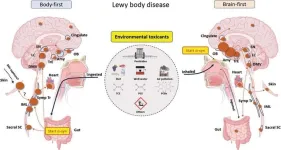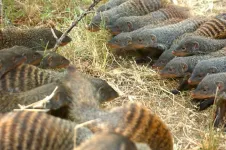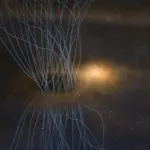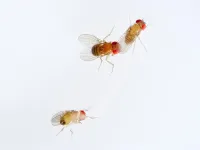(Press-News.org) RESTON, Va. — A new set of maps that document the movements of ungulates was published today in the fourth volume of the Ungulate Migrations of the Western United States. The maps in this collaborative U.S. Geological Survey report series reveal the migration routes and critical ranges used by ungulates, or hooved mammals, in the western U.S., furthering scientists’ understanding of the geography of big game migrations.
The new volume, “Ungulate Migrations of the Western United States: Volume 4,” documents 33 mule deer, pronghorn and elk herd migrations in collaboration with the wildlife agencies of Arizona, California, Nevada, New Mexico, Utah, Washington, Wind River Reservation, Wyoming and, for the first time, the states of Oregon and Colorado and the Pueblo of Tesuque in New Mexico. With this latest volume, the report series includes details and maps of the migrations and seasonal ranges for a total of 182 unique herds across 10 states.
“We’ve now mapped nearly two hundred migrations of mule deer, pronghorn, elk and other ungulates across diverse landscapes, from the high alpine Rocky Mountains to the temperate rainforest of the Pacific Northwest and the desert ecosystems of the American Southwest,” said Matt Kauffman, the report’s lead author and a wildlife biologist with the USGS Wyoming Cooperative Fish and Wildlife Research Unit at the University of Wyoming. “I’m impressed with how the team has worked together to adopt a standard set of methods to create robust migration maps of these ungulates across the West.”
Ungulates migrate throughout the American West each spring and fall to access the most nutritious plants and avoid deep snow. But as the human footprint in the West expands, these species increasingly face obstacles such as new subdivisions, energy development, impermeable fences and high-traffic roads on their long journeys. By mapping their migrations, scientists provide critical information—like where migrations overlap with existing and potential obstacles—to managers, policymakers, NGOs and private landowners working to minimize impacts on wildlife.
“To best conserve and protect the habitat used by migrating elk, mule deer, moose and pronghorn, we have to know exactly where these species move across the landscape,” said Blake Henning, chief conservation officer at the Rocky Mountain Elk Foundation. “That’s why this mapping work is so important—it’s to ensure their future health and well-being. We support and greatly appreciate the USGS and collaborating states and Tribes for leading this highly collaborative and globally significant effort.”
The new report highlights how migration maps can be used for conservation and management amid changing landscapes. For example, when solar farms are built in an ungulate’s range, they can negatively impact habitat and create barriers to movement for resident and migratory animals. The maps featured in the report series have previously been used to inform leasing decisions for oil and gas development, and they can also provide a key resource to help site future renewable energy projects that minimize effects to critical habitat.
“By using these migration maps and data, the Arizona Game and Fish Department was able to have informed conversations with landowners and solar developers about managing for wildlife corridors through a planned solar facility,” says Jeff Gagnon, statewide connectivity biologist at the Arizona Game and Fish Department. “These efforts will hopefully allow ungulates to continue their seasonal migrations.”
In addition to managers from the respective state wildlife agencies, co-authors on the fourth volume include the U.S. Forest Service, U.S. Fish and Wildlife Service, National Park Service, Bureau of Land Management, Navajo Nation Department of Fish and Wildlife, Pueblo of Tesuque Department of Environment and Natural Resources, and Shoshone & Arapaho Tribes Fish and Game, among other partners. Maps of each herd were produced in collaboration with state and Tribal experts by cartographers from the USGS and the InfoGraphics Lab at the University of Oregon. Thanks to funding from the USGS and the Rocky Mountain Elk Foundation, mapping by partners is ongoing, with a fifth volume of migration maps currently in preparation.
The Corridor Mapping Team, established in 2018 in response to Department of the Interior Secretary’s Order 3362, is a state-Tribal-federal partnership working to map ungulate migration corridors with standard techniques. The first three volumes in the Ungulate Migrations of the Western United States report series were published in 2020 and 2022.
To explore migration routes and ranges, visit the interactive www.westernmigrations.net portal, or download the map files from www.sciencebase.gov.
# # #
The USGS provides science for a changing world. Learn more at www.usgs.gov or follow us on Facebook @USGeologicalSurvey, YouTube @USGS, Instagram @USGS, or Twitter @USGS.
END
Can Jos Malda crack the code of cartilage?
In our aging society, healing joint problems is becoming increasingly important. To do this, cartilage damage must become repairable. But so far it has proven impossible to recreate the intricate internal structure of cartilage. Professor Jos Malda has now received an ERC Advanced grant of €2.5 million to crack that code.
Bringing biology and technology together
Throughout his career, Jos Malda has been concerned with the interface between biology and technology. It took him from studying Bioprocess Engineering in Wageningen to ...
A recent Mayo Clinic study published in Alzheimer's & Dementia: The Journal of the Alzheimer's Association investigated lucid episodes in people living with later stages of dementia, providing insights into how these occurrences reveal themselves.
The findings showed that 75% of people having lucid episodes were reported to have Alzheimer’s Disease as opposed to other forms of dementia.
Researchers define lucid episodes as unexpected, spontaneous, meaningful and relevant communication from a ...
11 April, Prague, Czech Republic—Glen Kelley’s journey as a heart transplant recipient came full circle today in Prague, as he addressed attendees of the Annual Meeting and Scientific Sessions of the International Society for Heart and Lung Transplantation (ISHLT), including members of his own care teams.
As a high school senior outside of Peoria, Illinois, Kelley was diagnosed with stage-4 Hodgkin’s lymphoma and underwent eight months of chemotherapy and radiation. After 10 months in remission, the ...
The nose or the gut? For the past two decades, the scientific community has debated the wellspring of the toxic proteins at the source of Parkinson’s disease. In 2003, a German pathologist, Heiko Braak, MD, first proposed that the disease begins outside the brain. More recently, Per Borghammer, MD, with Aarhus University Hospital in Denmark, and his colleagues argue that the disease is the result of processes that start in either the brain’s smell center (brain-first) or the body’s intestinal tract (body-first).
A new hypothesis paper appearing in the Journal of Parkinson’s ...
Professor Jill Walker Rettberg, Co-Director of the Centre for Digital Narrative at the University of Bergen, is awarded an ERC Advanced Grant for the project AI STORIES. The grant consists of 2.5 million Euro over 5 years. This is Rettberg's second ERC Grant.
“The AI STORIES project builds on the premise that storytelling is central to human culture, with narratives shaping our understanding of the world. We will study artificial intelligence and how it creates new narratives,” says Rettberg.
Generative AI has been dubbed ...
A major new research project will investigate how and why groups of animals from the same species fight one another.
By focussing on warlike species – mongooses and termites – researchers aim to understand how evolution can lead to extreme aggression between groups, the consequences of this and the factors that can lead to peace.
The results will help to explain why violence between rival groups evolves in some species but not others, or between some groups and not others – with implications for our understanding of human evolution.
The research team, led by Professor ...
[Vienna, April 11, 2024] – The European Research Council (ERC) has awarded an Advanced Grant to Mirta Galesic, a resident scientist at the Complexity Science Hub (CSH), to study the intricate workings of collective adaptation. The project aims to provide insights into why collectives – from families to entire societies – can be stuck in deadlocks about important problems, such as resolving long-standing political conflicts; or why they sometimes appear incapable of finding seemingly obvious solutions, such ...
Fukuoka, Japan—Kyushu University researchers have shed new light into a critical question on how baby stars develop. Using the ALMA radio telescope in Chile, the team found that in its infancy, the protostellar disk that surrounds a baby star discharges plumes of dust, gas, and electromagnetic energy. These 'sneezes,' as the researchers describe them, release the magnetic flux within the protostellar disk, and may be a vital part of star formation. Their findings were published in The Astrophysical Journal.
Stars, including our Sun, all develop from what are called stellar nurseries, large ...
Researchers have evaluated different types of pig farming – including woodland, organic, free range, RSPCA assured, and Red Tractor certified, to assess each systems’ impact across four areas: land use (representing biodiversity loss), greenhouse gas emissions, antibiotics use and animal welfare. Their study concludes that none of the farm types performed consistently well across all four areas – a finding that has important implications for increasingly climate conscious consumers, as well as farmers themselves.
However, there were individual farms that did perform well ...
Ozone disrupts chemical communication crucial to mating in insects
Insect pheromones are odor molecules used for chemical communication within a species. Sex pheromones play a crucial role in the mating of many insects. Species-specific odors attract males and females of the same species. At the same time, they maintain the natural boundaries between species.
The research team led by Nanji Jiang, Bill Hansson and Markus Knaden from the Department of Evolutionary Neuroethology at the Max Planck Institute for Chemical Ecology has ...






